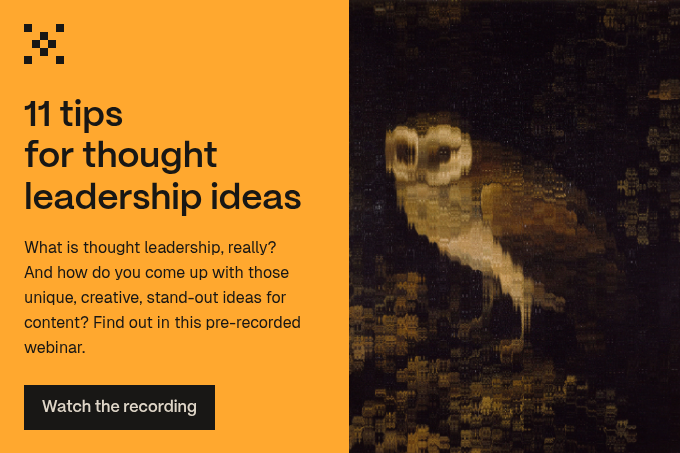Web copy warm-ups to get the ball rolling
- Cut your copy. No-one has time to read paragraph after paragraph across dozens of pages, no matter how well-crafted they are. Cut it down and make sure all the text on your website is pithy and relevant. Highrise, the customer relationship management software from 37signals, saw a 72 percent decrease in conversions after increasing the amount of copy on their home page. There are some exceptions to this rule, but not many.
- Proofread before you publish. Alright, alright. It’s a given. But nothing turns readers off more than a glaring typo.
- Get to the point. Start with the most important information first, even if it’s just a brief introductory sentence to give readers a taste of what’s to come. People are more likely to recall the first or last thing they’ve read, so take advantage of that!
- Keep it human. Check the readability of your web pages. Avoid jargon, hyperbole, obscure acronyms, excessive punctuation etc. They’re all speed bumps for the reader.
- Be conversational. Write as you speak, within reason. Use ‘you’ and ‘we’, rather than the third person, and avoid florid language.
- Keep it focused. One topic per sentence, one topic per paragraph, one message per page. Any more and you'll confuse the reader.
- Stay active. Avoid passive sentences and use active words.
- Write gripping headlines. Particularly for web copy, headlines and titles are everything. After all, only ten percent of visitors read body copy after seeing a headline. With that in mind, try to keep your headlines short, punchy, emotive, humorous or thought-provoking to keep your readers keen.
- Be direct. Don't feel awkward talking about price and prompting people to sign up to something. Being up front and specific tells visitors what's on offer and exactly how to get it. Skirting around the issue just looks suspicious.
- Verbs, not adjectives. Saying your product or service 'saves you $15 dollars a month' is much more persuasive than saying that it's 'cost-effective'. Actions speak louder than adjectives.
- Make it scannable. Don’t be afraid of sub-heads, bullet points and maybe even a little bold.
- Be objective. Don’t use hype and marketing language, such as ‘couldn’t get any easier’. Instead use the rule ‘show me, don’t tell me’.
- Be descriptive. Convey the information a potential buyer needs to make a decision.
- Use quantifiable facts. Readers love percentages, so try to be specific. For example, write ‘website visits increased by 34 percent’, rather than ‘website visits increased.’
- Don’t be afraid of white space. If your web pages are too busy, the chances are your poor reader’s eyes will grow tired and lose focus. An easy way to ensure you have some white space is to give some breathing room between paragraphs.
- A picture speaks a thousand words. When writing long form web or blog copy, try and break up your copywriting with some stock photos or bespoke illustrations. So long as they’re relevant, they’ll add to your content and make your pages look more engaging.
- Use clear visuals. On that note, make sure you also give potential customers a better idea of what the item or service they’re buying actually looks like.
- Good writing. Persuasive copywriting is good fun to read, but it's also essential for SEO – it will bring in free, organic search traffic.
Follow these tips and your website conversion rate will increase. But, if you really want to see it sky-rocket then get a little more involved with the 12 tips below.
Super-boosting website conversion tips
- Optimise for your personas. SEO optimisation alone is useless. Your content needs to be optimised for both search engines and personas. In fact, by creating quality content that resonates with your ideal buyers, you’ll naturally improve your SEO. This means tapping into the main issues faced by your personas, and the keywords they use in search queries.
- Appeal to your reader’s emotions. Consider your target personas and why they might be visiting your B2B website. Relate to their real problems and emotions with appropriately used emotive words and you’ll hook their interest.
- Demonstrate a sphere of knowledge. Google’s SEO spiders aren’t just looking for a handful of keywords anymore. Instead, they’re now prioritising websites that demonstrate a network of useful information on set topics – this is why content marketers are now following the ‘pillar page’ methodology. So, make sure your website is full of useful information and try to build out 'topic clusters' surrounding your products and services.
- Align copy with ads you’ve run. Keywords need to match the keywords targeted in any adverts you’ve used. It ensures that the language is consistent between the page and the advert, increasing reader confidence.
- Metatags. Custom write the page title, description and keywords to tie in with the keyword list.
- Benefits not features. Customers want benefits, not features and specs. They’re not looking for 'bigger, better, faster, stronger'. They need to solve a specific problem, so acknowledge that by framing their questions and explaining how your product or service answers them.
- Make social share buttons visible. Ok, so perhaps this doesn’t fit quite so neatly into the ‘copy’ tips side of this blog post. But if you’re writing interesting copy, allow your readers to share! Try including social share buttons on your website pages or ‘ClickToTweet’.
- Hyperlink to other internal content. Imagine your website as a map. Your users enter on one page, but there are infinite routes and decisions they could take from there. Help them along their journey by linking to other internal pages on your site (when relevant).
- Link out to (credible) experts. As much as this is SEO basic best practice, accrediting sources (particularly facts and statistics) and linking to valuable information makes your content look more trustworthy.
- Use keyword synonyms. So, you've established a good keyword opportunity for a blog post or pillar page. That's it, right? Unfortunately not. Using 'synonyms' will boost your SEO ranking efforts and also encourage you to avoid keyword stuffing.
- They’re here. Now what? You don’t want your website visitors to just read something, you want them to do something. Employ clear calls-to-action (CTAs) to guide visitors to relevant content and offers.
- Mix it up. Run A/B tests to work out what sort of copy best fuels website conversion. Try 'sign up for your 30-day free trial' rather than 'sign up for a free trial'. This technique is particularly important for CTAs, landing pages and thank you pages but it should be used for every part of your website.
Copy is too often overlooked for the design of the website, but the words are as much a part of the design as the visuals and structure. We hope these tips on how to increase your website conversion rate have given you food for thought.
Remember: your readers are busy. Make your copy worth their time.
[Editor's note: this blog was originally written in 2015 and has since been substantially updated in January 2020 by Claire Poskitt.]
About the Author
Marketing copywriter specialising in writing about technology, marketing, branding, strategy and thought leadership for Articulate Marketing.






